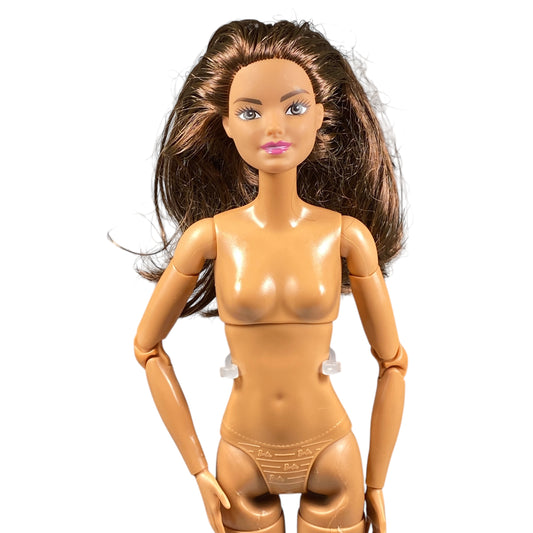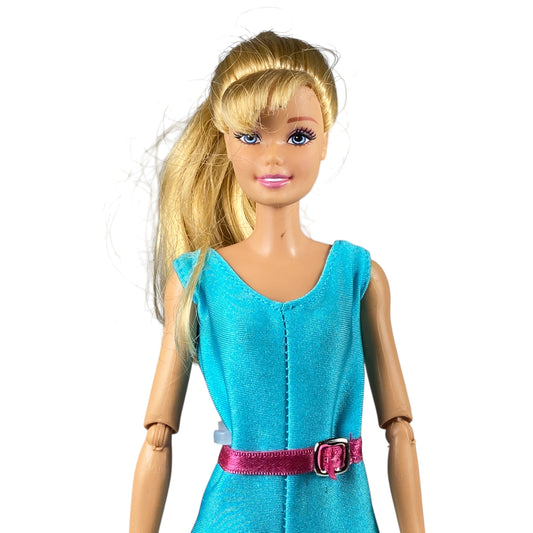Christie Barbie: A Trailblazing Icon in Doll History and Collecting
Share

Christie Barbie stands as a landmark figure in toy history, not just as Barbie’s first Black friend but as a catalyst for diversity in the doll industry. Introduced by Mattel in 1968, Christie broke racial barriers, redefined beauty standards, and became a cherished symbol of empowerment for generations. For collectors and enthusiasts, her legacy lives on through vintage releases, modern reinterpretations, and her enduring cultural impact. This deep dive into Christie’s history, doll releases, and collectible value will guide both new fans and seasoned collectors through her remarkable journey.
The Birth of Christie Barbie: A Revolutionary Moment
In 1968, amidst the civil rights movement and growing demands for representation, Mattel introduced Christie—Barbie’s first Black friend. This was a bold move at a time when Black dolls were scarce and often stereotypical. Unlike earlier attempts like Black Francie (1967), which reused a white doll’s mold, Christie was designed with authentic Black features: darker skin, fuller lips, and textured hairstyles.
Christie’s debut was more than a new doll—it was a cultural statement. She arrived the same year as iconic moments like Tommie Smith and John Carlos’ Black Power salute at the Olympics, reflecting a societal shift toward inclusivity2. Christie’s stylish outfits and career-driven persona (she was marketed as a “teenage fashion model”) positioned her as a role model, proving Black dolls could be glamorous, aspirational, and mainstream.
Evolution of Christie Doll Releases
Christie’s design evolved over the years, mirroring fashion trends and societal changes. Here’s a breakdown of her most notable releases:
| Doll Name | Years Produced | Key Features |
|---|---|---|
| Talking Christie | 1968–1972 | Pull-string voice box with phrases like “Let’s go shopping!” |
| Twist ’N Turn | 1970–1972 | Bendable waist for dynamic poses, mod-inspired outfits |
| Live Action Christie | 1971–1972 | Movable joints for “lifelike” poses, athletic-themed clothing |
| Sunset Malibu Christie | 1973–1976 | Beachwear focus, sunhats, and swimsuits for the “California girl” aesthetic |

Christie’s Cultural Impact: Beyond the Toy Aisle
Christie’s influence extended far beyond playtime:
Representation Matters: She gave Black children a doll that mirrored their identity, fostering self-love and pride.
Career Inspiration: Like Barbie, Christie took on diverse roles—nurse, astronaut, and entrepreneur—showing girls they could aspire to anything5.
Fashion Legacy: Her outfits, from psychedelic ’60s prints to ’70s bohemian styles, remain iconic. Collectors often seek out her original accessories, like vinyl boots and patterned dresses.
Christie also paved the way for future dolls:
Julia (1969): Based on Diahann Carroll’s groundbreaking TV character, this doll reinforced professional representation for Black women.
First Official Black Barbie (1980): Mattel finally gave Barbie herself a Black iteration, building on Christie’s success.
Modern Iterations: Today’s diverse Barbie lines—including curvy, disabled, and LGBTQ+ dolls—owe a debt to Christie’s trailblazing role.
Why Christie Barbie Resonates with Collectors Today
For doll enthusiasts, Christie represents nostalgia, history, and value:
Vintage Appeal: Her 1968–1976 releases capture the essence of mid-century fashion and pop culture.
Rarity: Early Christie dolls in pristine condition are scarce, driving up their market value.
Cultural Relevance: As conversations about diversity in toys grow, Christie’s legacy feels more urgent than ever.
Tips for Collecting Christie Dolls:
Check for Authenticity: Look for Mattel’s stamped markings (e.g., “©1968” on the lower back).
Prioritize Condition: Intact hair, original clothing, and minimal discoloration increase value.
Explore Modern Releases: Mattel’s 2023 President Barbie (inspired by Issa Rae) and collaborations with designers like Shiona Turini offer fresh twists on Christie’s legacy5.
Conclusion: Christie Barbie’s Enduring Magic
From her revolutionary debut to her status as a collector’s gem, Christie Barbie embodies resilience, creativity, and progress. For doll lovers—whether they’re reliving childhood memories or discovering her story for the first time—Christie remains a timeless icon. Her journey reminds us that toys aren’t just playthings; they’re mirrors of our world and blueprints for a more inclusive future.
By celebrating Christie’s history and value, your doll store can connect with audiences seeking nostalgia, representation, and a piece of cultural heritage. Whether they’re hunting for a vintage Talking Christie or a modern tribute, Christie Barbie continues to inspire generations.




